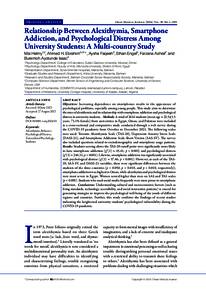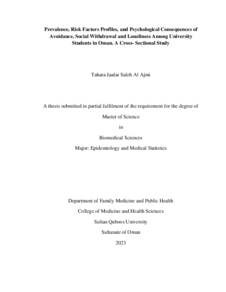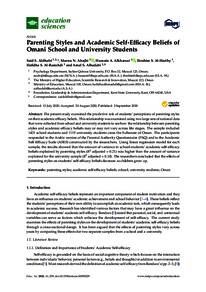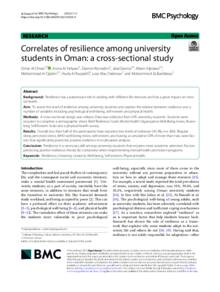Document
Relationship between alexithymia, smartphone addiction, and psychological distress among university students : A multi-country study.
Identifier
DOI 10.5001/omj.2024.50
Source
Oman Medical Journal, v. 39, no. 1, e593 p. [1-10].
Contributors
Ebrahim, Ahmed H., Author
Faqee, Aysha., Author
Ashraf, Farzana., Author
Engel, Ethan., Author
Isaac, Buremoh Ayotunde., Author
Country
Oman
City
Muscat
Publisher
Oman Medical Specialty Board.
Gregorian
2024-01-01
Language
English
Subject
English abstract
Increasing dependence on smartphones results in the appearance of
psychological problems, especially among young people. This study aims to determine
the rates of alexithymia and its relationship with smartphone addiction and psychological
distress in university students. Methods: A total of 2616 students (mean age = 22.5±3.5
years; 73.1% female) from universities in Egypt, Oman, and Pakistan were included
in a cross-sectional and comparative study conducted through a web survey during
the COVID-19 pandemic from October to December 2021. The following scales
were used: Toronto Alexithymia Scale (TAS-20), Depression Anxiety Stress Scale
(DASS-21), and Smartphone Addiction Scale-Short Version (SAS-SV). The survey
also included questions related to sociodemographic and smartphone usage patterns.
Results: Students scoring above the TAS-20 cutoff point were significantly more likely
to have smartphone addiction (χ2
(1) = 45.41; p 0.001) and psychological distress
(χ2
(1) = 246.31; p 0.001). Likewise, smartphone addiction was significantly associated
with psychological distress (χ2
(1) = 57.46; p 0.001). However, at each of the TAS20, SAS-SV, and DASS-21 variables, there were significant differences between the
students of the three countries (p 0.050, p 0.010, and p 0.010, respectively);
smartphone addiction was highest in Oman, while alexithymia and psychological distress
were most severe in Egypt. Women scored higher than men on SAS and TAS scales
(p 0.001). Students who used social media frequently were more prone to smartphone
addiction. Conclusions: Understanding cultural and socioeconomic factors (such as
living standards, technology accessibility, and social interaction patterns) is crucial for
generating strategies to improve the psychological well-being of the youth of different
regions and countries. Further, this study confirms the findings of recent studies
indicating the heightened university students’ psychological vulnerability during the
COVID-19 pandemic.
ISSN
1999-768X (Print)
2070-5204 (Electronic)
Category
Journal articles




